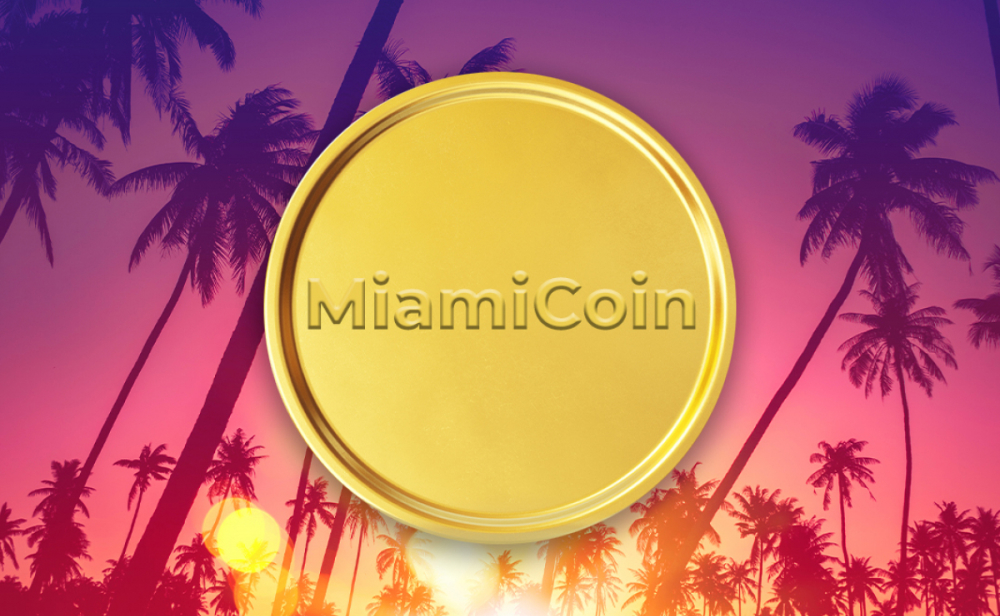
MiamiCoin (MIA) is a CityCoin on the Stacks blockchain, a layer-one blockchain that enables decentralized applications (DApps) to operate on Bitcoin (BTC). Thanks to the smart contract language called Clarity used by Stacks, decentralized applications can launch on and be secured by the Bitcoin blockchain.
CityCoins empower contributions to cities through blockchain technology. Citizens who want to support their city and have a say over the growing crypto coin treasury can mine or stack their coins. MiamiCoin was launched in August 2021 and has been providing Miami with a constant stream of revenue in cryptocurrency.
The four main features of CityCoins are activation, mining, programming, and stacking.
Activation: Just like STX and BTC, CityCoins are mined. Mining only starts when 20 independent wallets have signaled activation after contract deployment.
Mining: To mine CityCoins, miners have to deposit STX into a smart contract on the Stacks blockchain. 30% of mined coins are reserved for the city.
Programming: CityCoins introduce utility to developers, entrepreneurs, residents, and others thanks to the Clarity programming language.
Stacking: You can stack CityCoins if you stake them for a selected reward cycle. 70% of mined coins are reserved for stackers.
How Does MiamiCoin Work?
MiamiCoin needs the support of a city’s residents in order to work.
At least 20 independent wallets have to signal activation after the contract’s deployment. In other words, after the smart contract is set up, 20 users have to register with their wallets to indicate a minimum level of interest. This kickstarts a 24-hour countdown, after which MiamiCoin can be mined following a straightforward three-step process.
First, MIA is mined by the community. Miners must lock STX in the smart contract in any Stacks block and are rewarded for that with MIA. Second, 70% of mining rewards go to people that opt for stacking (as staking is called in the STX ecosystem) their MiamiCoin. Third, the remaining 30% is allocated to a custodial wallet belonging to the city of Miami.
Since there are no hardware requirements and the protocol is open-source, anyone can build a website interacting with the CityCoins smart contract. Miners can participate only once per block and STX committed for mining MiamiCoin are not returned, but distributed to stackers and the city’s custodial wallet. Only one miner per block can claim the reward
As with other proof-of-work blockchains, early interaction is heavily incentivized. This is the issuance schedule of MiamiCoin:
The first 10,000 Stacks blocks issue 250,000 CityCoins over approximately three months.
The next 200,000 blocks issue 100,000 coins over approximately four years (minus a bonus period for early miners).
The next 210,000 blocks issue 50,000 coins over approximately four years.
The next 210,000 blocks issue 25,000 coins over approximately four years.
The next 210,000 blocks issue 12,500 coins over approximately four years.
The next 210,000 blocks issue 6,250 coins over approximately four years.
The next 210,000 blocks issue 3,125 coins over approximately four years.
In this way, MiamiCoin follows a similar halving mechanism to Bitcoin and Stacks.
What Makes MiamiCoin Unique?
There are currently three CityCoins on the market: MiamiCoin, Austin Coin, and New York City Coin.
A cultural hotspot for many decades, Miami has transformed into one of America’s main innovation centers and become a technology hub. The influx of developers and entrepreneurs into the city has led to massive network effects and prompted the city’s government to embrace the new tech scene. Particularly in regards to blockchain technology, Miami is among the leading American cities. Each year, the city hosts the annual Bitcoin conference, which hosts illustrious guest speakers like Ross Ulbricht in 2021 or Nayib Bukele, president of El Salvador, in 2022. The 2022 Bitcoin conference from April 6-9 will be partially sponsored by CoinmarketCap.
As such, welcoming MiamiCoin as an additional revenue stream and a way of raising the city’s profile as a crypto mecca has been a no-brainer.
The more MIA is mined, the more goes to the city’s wallet. Any city with a coin can use its treasury at its discretion and is not bound in any legal way to commit the CityCoin rewards to what stackers deem the most relevant way of spending it. Put differently, there is no way stackers can sue the City of Miami if it decides to spend the money irresponsibly — MiamiCoin does not make the city a DAO. However, MiamiCoin could become a key tool for attracting donations to the city and, as such, fiscally responsible spending is socially incentivized.
For example, Miami’s citizens and businesses may invest in MIA and hold to incentivize the city to also hold and drive up its price. Alternatively, they may suggest that the city invests the funds in infrastructure and services. If revenues are used to the citizens’ benefit, this could create a virtuous circle of growth.
Moreover, holders have an incentive to mine and use MiamiCoin, as they can earn BTC rewards from the protocol with increasing usage. They can create apps and solve previously unsolvable problems thanks to blockchain technology. For instance, MiamiCoin makes it possible to gate access to digital or physical spaces, create financial applications for trading and lending, and use smart contracts in various other ways.

Comments